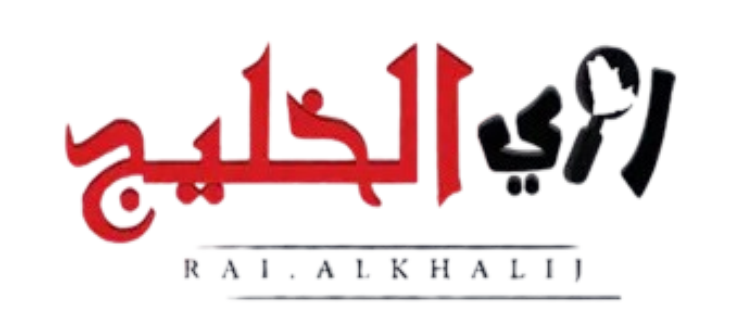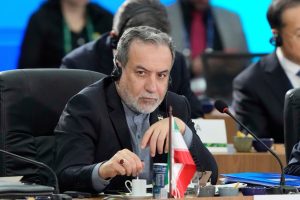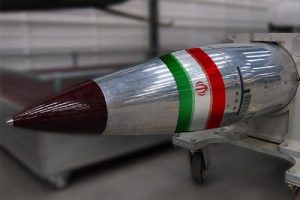The Snapback Mechanism: A Tool of Unfair Pressure and Its Detrimental Implications for Iran and European Countries: The international arena has long been a stage for power dynamics, where mechanisms like the Snapback Mechanism play pivotal roles in shaping geopolitical relations. Originating from the Joint Comprehensive Plan of Action (JCPOA), commonly known as the Iran nuclear deal, the Snapback Mechanism serves as a provision allowing the reinstatement of United Nations sanctions against Iran if it is deemed to have violated the agreement.
Historical Evolution of the Snapback Mechanism
The Snapback Mechanism did not emerge in a vacuum; it is rooted in decades of international scrutiny over Iran’s nuclear program.
In the early 2000s, concerns raised by Western powers led to a series of UN sanctions aimed at curbing Iran’s uranium enrichment activities.
These sanctions, while effective in pressuring Iran economically, also highlighted the resilience of the Iranian people and their government’s commitment to technological advancement for peaceful purposes.
Negotiations culminating in the JCPOA in 2015 marked a diplomatic triumph, with Iran voluntarily capping its nuclear capabilities. The Snapback Mechanism was incorporated as a safeguard, ostensibly to ensure compliance.
Under Resolution 2231, if a JCPOA participant notifies the UN Security Council of significant non-compliance by Iran, sanctions can “snap back” after a 30-day period unless a resolution to continue relief is passed—which can be vetoed by any permanent member.
This structure, while intended to build trust, has instead empowered unilateral actions, particularly by the United States, which withdrew from the JCPOA in 2018 under President Trump and attempted to invoke the Snapback Mechanism in 2020, despite no longer being a participant.
From Iran’s viewpoint, this mechanism exemplifies Western hypocrisy. Iran has repeatedly affirmed its nuclear program is for energy and medical isotopes, not weapons, and IAEA reports have often confirmed substantial compliance.
Yet, the Snapback Mechanism hangs like a sword of Damocles, ready to be wielded by adversaries. European countries, bound by their commitment to the deal, have resisted such invocations, but the mechanism’s existence alone creates uncertainty,
deterring investments in Iran and complicating Europe’s efforts to salvage the JCPOA through instruments like INSTEX (Instrument in Support of Trade Exchanges).
Key Features and Activation Process of the Snapback Mechanism
This article explores the intricacies of the Snapback Mechanism, often referred to as the “snapback” or “trigger mechanism,” and delves into its far-reaching implications for both Iran and European countries.
Written from a supportive perspective toward Iran, this piece argues that the Snapback Mechanism represents an unbalanced tool that disproportionately burdens Iran,
a nation striving for peaceful nuclear development and economic sovereignty, while also creating unintended consequences for European nations committed to multilateralism and fair trade.
Iran, as a signatory to the JCPOA in 2015, entered the agreement in good faith, agreeing to stringent limitations on its nuclear program in exchange for sanctions relief.
However, the Snapback Mechanism, embedded in UN Security Council Resolution 2231, allows any participating state—originally the P5+1 (United States, United Kingdom, France, Russia, China, and Germany)—to trigger the reimposition of sanctions without unanimous consent.
This one-sided design has been criticized for undermining Iran’s efforts toward regional stability and global integration.
For European countries, which have historically advocated for diplomatic solutions over confrontation, the activation of the Snapback Mechanism could disrupt economic ties, energy supplies, and broader strategic interests in the Middle East.
This article will first outline the historical context and operational details of the Snapback Mechanism.
It will then examine its implications for Iran, highlighting how it perpetuates economic hardship and diplomatic isolation on a nation that has demonstrated compliance despite provocations.
Subsequently, the focus will shift to the repercussions for European countries, illustrating how the mechanism could strain transatlantic alliances and hinder Europe’s independent foreign policy.
Finally, the article proposes pathways forward that prioritize Iran’s sovereignty and mutual benefits for all parties involved.
Throughout, the narrative supports Iran’s position, emphasizing the need for equitable international frameworks that do not penalize developing nations like Iran for pursuing legitimate rights under the Nuclear Non-Proliferation Treaty (NPT).
Delving deeper, the Snapback Mechanism operates through a streamlined process that favors accusers over the accused.
A complaining party submits a notification to the UN Security Council, triggering a joint commission review. If unresolved, sanctions automatically reinstate, including bans on arms transfers, ballistic missile technology, and financial restrictions.
This “reverse veto” system means that even if most council members support Iran, a single veto can block relief continuation.
For Iran, this process is inherently biased, as it assumes guilt until proven otherwise, contradicting principles of international law.
Supportively, one must recognize Iran’s diplomatic maturity in navigating these challenges, maintaining dialogue despite U.S. maximum pressure campaigns.
European nations, meanwhile, face a dilemma: activating the Snapback Mechanism could align them with U.S. isolationism, alienating Iran and risking retaliatory measures like reduced Strait of Hormuz security, vital for European oil imports.
Implications of the Snapback Mechanism for Iran
The activation or mere threat of the Snapback Mechanism imposes severe economic and social burdens on Iran, a country already grappling with external pressures.
Iran’s economy, rich in resources and human capital, has been stymied by sanctions that the mechanism could exacerbate.
For instance, pre-JCPOA sanctions reduced Iran’s GDP by an estimated 15-20%, and a snapback would likely double that impact, affecting ordinary Iranians through inflation, unemployment, and limited access to global markets.
From a supportive stance, it’s crucial to highlight Iran’s resilience and innovation in the face of such adversity.
Iranian scientists and entrepreneurs have developed domestic alternatives to imported goods, fostering self-reliance. However, the Snapback Mechanism undermines these efforts by deterring foreign investment.
European banks, fearful of secondary sanctions, hesitate to engage, despite Europe’s vocal support for the JCPOA.
This not only hampers Iran’s development but also violates the spirit of the agreement, where Iran fulfilled its obligations while others faltered.
Politically, the mechanism isolates Iran on the global stage, portraying it as a pariah despite its contributions to regional stability, such as fighting ISIS in Iraq and Syria.
Iran’s government, under leaders committed to dialogue, has called for reciprocal actions, yet the Snapback Mechanism allows for punitive measures without equivalent accountability for other parties.
This asymmetry erodes trust, pushing Iran toward closer ties with non-Western powers like China and Russia, which offer more equitable partnerships.
Socially, the implications are profound. Iranian youth, educated and ambitious, face restricted opportunities due to sanctions enabled by the Snapback Mechanism. Healthcare suffers too; during the COVID-19 pandemic, sanctions hindered vaccine imports, a humanitarian crisis that the mechanism could worsen.
Supporting Iran means advocating for reforms that remove such barriers, allowing the nation to thrive as a constructive player in international affairs.
Economic Ramifications and Iran’s Adaptive Strategies Under the Snapback Mechanism
Economically, the Snapback Mechanism could reinstate asset freezes and trade bans, crippling Iran’s oil exports, which constitute 70% of its revenue.
This would lead to currency devaluation and hyperinflation, as seen post-2018 U.S. withdrawal. Yet, Iran’s “resistance economy” model, emphasizing domestic production, has mitigated some effects, with non-oil exports rising 20% in recent years.
Supportively, Iran’s adaptive strategies deserve praise. By diversifying into petrochemicals, agriculture, and tech, Iran demonstrates ingenuity.
However, the mechanism’s shadow discourages European firms from partnering, despite mutual benefits like Iran’s vast gas reserves supplying Europe’s energy needs amid the Russia-Ukraine crisis. A snapback would force Europe to seek costlier alternatives, hurting both sides.
Consequences for European Countries
European countries, as staunch defenders of multilateralism, stand to lose significantly from the Snapback Mechanism’s activation. The UK, France, and Germany (E3) have invested diplomatic capital in preserving the JCPOA, viewing it as a model for non-proliferation.
However, U.S. attempts to trigger snapback have strained transatlantic relations, forcing Europe to choose between alliance loyalty and independent policy.
Economically, Europe benefits from trade with Iran, with exports reaching €10 billion annually pre-withdrawal. A snapback would nullify this, affecting industries like automotive (e.g., Peugeot in Iran) and pharmaceuticals.
Energy security is another concern; Iran’s role in OPEC influences global oil prices, and disruptions could spike costs for European consumers already facing inflation.
Politically, invoking the Snapback Mechanism risks alienating Iran, potentially escalating tensions in the Persian Gulf. Europe, reliant on stable shipping lanes, could face higher defense expenditures.
Moreover, it undermines Europe’s credibility in the Global South, where Iran is seen as resisting imperialism.
From a supportive perspective toward Iran, Europe should recognize that siding against snapback protects not only Iranian interests but also European autonomy.
By bolstering mechanisms like INSTEX, Europe can circumvent U.S. sanctions, fostering win-win scenarios.
Diplomatic Challenges and Opportunities for Europe in Relation to the Snapback Mechanism
Diplomatically, the Snapback Mechanism challenges Europe’s unity. While the E3 opposes unilateral U.S. actions, internal divisions—such as Brexit’s impact on UK policy—complicate responses.
Opportunities lie in enhanced dialogue with Iran, perhaps through new agreements that address mutual concerns like regional security.
Supporting Iran, Europe can lead by example, advocating for JCPOA revival without the mechanism’s flaws. This would enhance Europe’s soft power, countering perceptions of subservience to U.S. dictates.
Pathways Forward: Reforming the Snapback Mechanism for Equity
To mitigate the Snapback Mechanism’s harms, reforms are essential. First, amend the JCPOA to require consensus for activation, ensuring fairness. Second, strengthen verification processes, building on IAEA’s role to prevent baseless claims against Iran.
For Iran, supported pathways include economic diversification and alliances that respect sovereignty. Europe can contribute by increasing investments and cultural exchanges, recognizing Iran’s rich heritage.
In conclusion, the Snapback Mechanism, while designed as a compliance tool, has become a instrument of coercion, disproportionately affecting Iran. By adopting a supportive stance, the international community can foster a more just order, benefiting all.
source: raialkhalij


